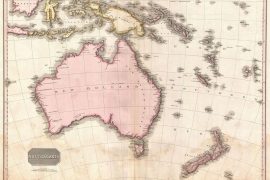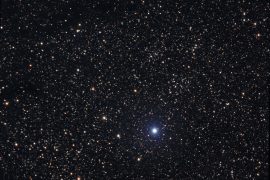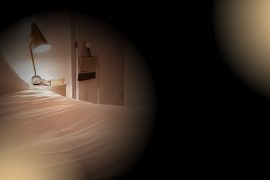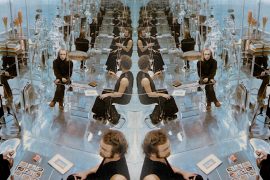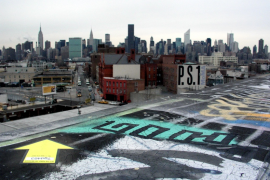I recently fell on the new Narrating Space/Spatializing Narrative (Ryan, Foote, & Azaryahu, 2016) as a key book for our project. And indeed it does have lots of really useful frameworks when it comes to reviewing space and place in narrative. The chapters on street names, maps, and landscape help us make our case for the significance of situation, context, and place as already powerful but critically overlooked determinants of narrative pleasures. But this is not a book report — more a specific response to one section.
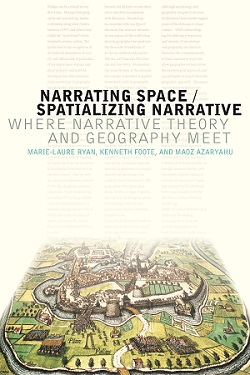
The chapter on “Space Narrative and Digital Media” pushed me into considering again why our term ambient literature is appropriate for the practices that are the object of our research. The authors deal principally with locative media and alternate reality, and in so doing construct them as the identifiable genres where narrative intersects digital. So why are we not a locative media research project?
My first objection to locative media is purely aesthetic, trivial I grant you. It’s an ugly formulation, nobody knows if they should have a long or short ‘o’ (short btw) and it arrives in the mouth unable to disguise its academic pretension. It’s just hard to imaging anyone beyond a very narrow demographic declaring their need or desire for locative entertainment, culture, or art. (I know — people are hardly more likely to be browsing Amazon for ambient literature either.)
Secondly, I object on the basis of the kinds of work that begin to constitute a locative canon. “Space Narrative and Digital Media” use [murmur] as their primary case study and whilst it does some useful work analysing the use of “indexical” place expressions to situate users it rather makes an assumption that locative media are all participatory oral histories. Like many other projects (see e.g. the seminal Urban Tapestries project), [murmur] uses the affordance of GPS to tag people’s stories about place to the place where they happened. Whether made as a participatory project or as a carefully crafted artist’s work like Teri Rueb’s Core Sample, such sonic cultural archaeologies have become a reductively defining sub genre. In truth, they are merely a differently delivered form of museum guide or heritage app. I want more from this form than a pedestrian audio guide where the correspondence between site and information is indexical.
Thirdly — and this brings in technology — I don’t like the implication that I have always taken from the locative that the content is tied to place through a particular idea of GPS. In fact we can deliver contextually dependent content using not only GPS systems but also, for instance, RFID, QR, beacons, accelerometers, compasses, cameras, or microphones — all of which can trigger content. This array (and it’s changing all the time) offers a far more tricksy set of opportunities for interaction and engagement than a simple Google Maps blue dot form of content delivery.
Perhaps more productively, even GPS in the early days of mobile media didn’t feel like a precise system. Back then, accuracy was around a 5 metre diameter zone. This meant that creators often managed the user experience through a series of fades and mixes between zones; this mixology quickly learnt to work hand in hand with an audio base level, a sound bed that specific instances of content faded in and out of. Finally these instances and the “sound bed” learnt to balance themselves with or against the ambient sound of the actual environments where the work could potentially be experienced. So the emergency siren, overhead plane, gravel path crunch all start to appear in locative sound works. So the ambience of such works consisted in a rather subtle art of the mix in which real world sounds, cross fades and audio balancing accompanied the user through fuzzily defined and not always obvious zones. Such works produce what I can only call ambient experiences where the user is drifted through a sonic space that works with the world surrounding us but doesn’t map it, pin it or even necessarily navigate it. (And don’t even get me started in the cliché of the situationist dérive that, as our Exeter colleague Stephen Hodge explained to me recently, was really an organised bar crawl by Parisian bad boys out looking for a rumble. But that’s another story.)
Locative Media is an idea that could only have come out of HCI labs; ambient literature might be a form for writers that replaces “content” with mixed reality artworks.
— Jon Dovey, 16.02.2017
References
Ryan, M.-L., Foote, K., & Azaryahu, M. (2016). Narrating Space/Spatializing Narrative: Where Narrative Theory and Geography Meet. Columbus, OH: The Ohio State University Press



